- Stay in The Loop
- Contact us
-
Cart
-
Shopping cart
No products in your cart
Total: Products $
-
- Login
After you buy rugs online at Modern Rugs.com and put them on your floor, you will want to keep them looking their best for years to come. To get the longest wear out of your new area rug, you should know how to clean and take care of it. Most of the rugs you can buy online at Modern Rugs.com are wool rugs, which have a natural resistance to stains and soil, but regular cleaning is necessary to prevent the breakdown of the natural fibers. The following information has been compiled from the knowledge of rug manufacturers and experts, covering almost every possible scenario from grape juice stains to grease stains and mud. Simply scroll down to the area rugs and carpet chart brelow and learn more about caring for your new area rug.
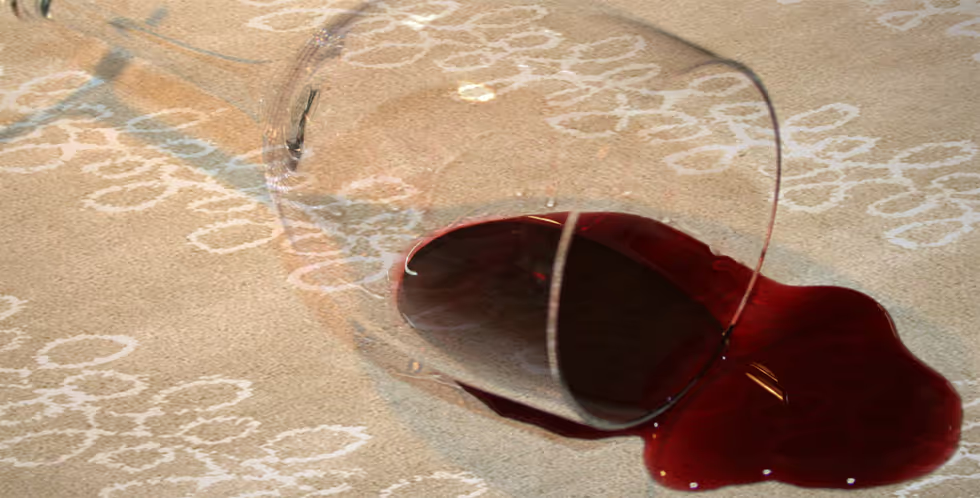
So you just bought a new rug? It's beautiful. And we are sure you couldn't wait to get home with it and roll it out. You probably didn't sweep up the dirt on the floor before you rolled it out, and we are sure you'll never consider taking your shoes off before you walk on it. And when it snows and there is salt all over the place, you probably don't realize the rug is acting like a sponge soaking up all of that salt and road oil.
In the spring, more rain, more mud, more dirt, more grit acting like sandpaper on the wool in your prized possession. And the moths that you never treated are now hatching, possibly in the back of your rug. Never being one to deprive animals of food, you've provided that moth larve with a veritable foodfest in order to feed the moth larvae until adulthood. When the moth is old enough to fly away, and you see it, the damage is done! You vacuum your carpet and the pile comes out. Initially you think you bought a cheap carpet - but in reality those little, harmless moths that you saw fly away, have eaten the backs of the knots in your carpet. There is nothing holding the pile onto the foundation.
You have a great party! Lots of people, red wine, cheese, dip, shrimp, cocktail sauce. Some doesn't get eaten, some feeds the guests, and some ends up feeding the carpet. You don't even realize this until the next day.
And pets. You love cats and dogs. And they're great house pets, 99% of the time. That other 1%, when they're sick and can't help themselves, they have biological accidents. If they have these 1% of the time, they're going to give your prized possession an alkalyn bath 3.5 days a year! It is the same as dropping a yellow dye on your rug 3 times a year.
In short, if you ever asked how often should I clean my rug, the answer is at a minimum every 3 years. But you should treat spots at home with the remedies I prescribe as soon as the spot occurs.
When you get your rug cleaned, ask the dealer if he has a "beater". This is a mechanized method of hitting the back of the rug with straps in order to remove as much dirt as possible before the rug gets wet. If he doesn't have a "beater", you must insist on the thorough vacuuming of the carpet on both sides before the rug is cleaned.
This issue of removing dry dirt is critical! The dirt acts like sandpaper and wears away the fiber. If it is not removed before getting wet, you now have the doubly difficult task of removing mud! The Carpet and Rug Institute suggests that a "beater" will remove 4-9 pounds of dry dirt from a 9 x 12 rug. That's a lot of dirt!
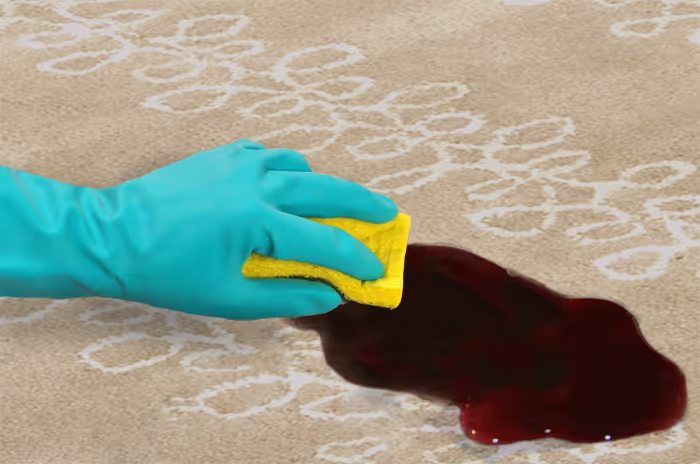
Listed below the chart are 7 Stain Removers, that can be used singly or in combination to combat a stain. When you apply these agents, blot or dab, the agent onto the spot. Don't Rub! That will only make the stain bigger. Try to work from the outside of the stain in towards the center.
AREA RUG AND CARPET STAIN REMOVAL CHART | |||||
| STAIN | WOOL | ACRYLIC | NYLON | OLEFIN | POLYESTER |
| Animal Glue | F | F | A,G | F | F |
| Argyrol | A,G | A,G | A,G | A,G | A,G |
| Ball Point Ink | B,C,then A,G | B,C,then A,G | B,C | B,C | B,C |
| Beer | A,G | A,G | A,G | A,G | A,G |
| Catsup | A,G | A,G | A,G | F,A,G | F,A,G |
| Carbon Black | Vacuum A,G | Vacuum A,G | Vacuum B,C | Vacuum B,C | Vacuum B,C |
| Chewing Gum | C | C | C | C | C with steam |
| Clay | Vacuum A,G | Vacuum A,G | Vacuum A,G | Vacuum A,G | Vacuum A,G |
| Cola | A,G | A,G | A,G | A,G | A,G |
| Coffee(B,C&S) | A,G | A,G | A,G | A,G | A,G |
| Colored Paper | A,G | A,G | A,G | A,G | A,G |
| Crayon | B,G | B,G | B,C | B,C | B,C,A,G |
| Duco Cement | B,C | B,C | B,C | B,C | B,C |
| Egg | A,G | A,G | A,G | A,G | A,G |
| Enamel | B,F,A,G | B,F,A,G | B,F,A,G | B,F,A,G | B,F,A,G |
| Food Dye | A,G | A,G | A,G | A,G | A,G |
| Fruit Juice | A,G | A,G | A,G | A,G | A,G |
| FurnitureDye | B,C,F,A,G | B,C,F,A,G | A,B,C | B,C | B,C,A,G |
| Furniture Polish | B,C,F,A,G | B,C,F,A,G | A,G,C | B,C | B,C,A,G |
| Grape Drink | A,G | A,G | A,G | A,G | A,G,C |
| Gravy | A,G | A,G | A,G | A,G | A,G,C |
| Grease,car | C | C | C | C | B,C |
| Ice Cream | A,G | A,G | A,G | A,G | A,G |
| India Ink | B,C,A,G | B,C,A,G | A,G | A,G | B,C,A,G |
| Iron Rust | Vacuum D,G | Vacuum D,G | Vacuum D,G | Vacuum D,G | Vacuum D,G |
| Latex Paint | B,F,A,G | B,C | A,G | B,C | B,C,A,G |
| Linseed Oil | C | C | C | C | C |
| Lipstick | B,C | B,C | B,C | B,C,A,G | B,C,A,G |
| Merthiolate | A,G | A,G | A,G | B,C,A,G | B,C,A,G |
| Milk | B,C,A,G | A,G | A,G | A,G | A,G |
| Mustard | A,G | A,G | A,G | A,G | A,G |
| Nail Polish | E | F,B,C | F,C | ||
| Oil, Car | C | C | C | C | C |
| Oil, Paint | B,F,A,G | B,F,A,G | B,C | B,C | B,C,A,G |
| Permanent Ink | A,G | A,G | A,G | A,G | A,G |
| Plaster | Vacuum A,G | Vacuum A,G | Vacuum A,G | Vacuum A,G | Vacuum A,G |
| Rouge | A,G | ||||
| Rubber Cement | B,C | B,C | B,C | B,C | B,C,A,G |
| Shoe Dye | B,C | C | |||
| Shoe Pol.(Liq) | B,C,A,G | B,C,A,G | A,G,C | B,C | C |
| Shoe Pol.(Wax) | B,A,G | B,A,G | C | B,C,A,G | C |
| Tar | C | C | C | C | C |
| Tea | A,G | A,G | A,G | A,G | A,G |
| Tobacco | A,G | A,G | |||
| Urine | A,G | A,G | A,G | A,G | A,G |
| Washable Ink | A,G | A,G | A,G | A,G | A,G |
| Water Colors | A,G | A,G | A,G | A,G | A,G |
| Wax Candle | Steam,C | Steam,C | Steam,C | Steam,C | Steam,C |
A. Detergent solution - one teaspoon of a neutral detergent ( a brand used for washing lingerie such as Lux, Dreft, or Vel) and one teaspoon of white vinegar in a quart of warm water.
B. Paint Remover - should not contain any oil. Lacquer thinner may also be used.
C. Dry Cleaning Fluid - any common brand used according to manufacturer's instructions.
D. Rust Remover - (brands such as Erusticator or Rust Go are recommended.
E. Acetone - common drugstore brand or nail polish remover WITHOUT LANOLIN or lacquer thinner.
F. Alcohol - rubbing, denatured, or isopropyhl.
G. Water
NOTE: If there is no recommended procedure for removing a stain on a specific pile fiber, call a Professional Carpet Cleaner and give him the information pertaining to the staining problem.
So you just bought a new rug? It's beautiful. And we are sure you couldn't wait to get home with it and roll it out. You probably didn't sweep up the dirt on the floor before you rolled it out, and we are sure you'll never consider taking your shoes off before you walk on it. And when it snows and there is salt all over the place, you probably don't realize the rugis acting like a sponge soaking up all of that salt and road oil.
In the spring, more rain, more mud, more dirt, more grit acting like sandpaper on the wool in your prized possession. And the moths that you never treated are now hatching, possibly in the back of your rug. Never being one to deprive animals of food, you've provided that moth larve with a veritable foodfest in order to feed the moth larvae until adulthood. When the moth is old enough to fly away, and you see it, the damage is done! You vacuum your carpet and the pile comes out. Initially you think you bought a cheap carpet - but in reality those little, harmless moths that you saw fly away, have eaten the backs of the knots in your carpet. There is nothing holding the pile onto the foundation.
You have a great party! Lots of people, red wine, cheese, dip, shrimp, cocktail sauce. Some doesn't get eaten, some feeds the guests, and some ends up feeding the carpet. You don't even realize this until the next day.
And pets. You love cats and dogs. And they're great house pets, 99% of the time. That other 1%, when they're sick and can't help themselves, they have biological accidents. If they have these 1% of the time, they're going to give your prized possession an alkalyn bath 3.5 days a year! It is the same as dropping a yellow dye on your rug3 times a year.
In short, if you ever asked how often should I clean my rug, the answer is at a minimum every 3 years. But you should treat spots at home with the remedies I prescribe as soon as the spot occurs.
When you get your rugcleaned, ask the dealer if he has a "beater". This is a mechanized method of hitting the back of the rugwith straps in order to remove as much dirt as possible before the ruggets wet. If he doesn't have a "beater", you must insist on the thorough vacuuming of the carpet on both sides before the rugis cleaned.
This issue of removing dry dirt is critical! The dirt acts like sandpaper and wears away the fiber. If it is not removed before getting wet, you now have the doubly difficult task of removing mud! The Carpet and Rug Institute suggests that a "beater" will remove 4-9 pounds of dry dirt from a 9 x 12 rug. That's a lot of dirt!
Due to its composition, wool rugswill produce shed fluff for a considerable period of time. Frequent vaccuuming is recommended. Do not let stains dry and apply the most suitable products to eliminate them [a list of stain removal methods follows]. We recommend not to bring rugsto a laundry too often as they could become damaged. In case it is absolutely needed, care should be taken that it is a specialized laundry in rugcleaning. As with any rugwith a latex backing, hand tufted rugsshould not be dry cleaned. If any doubts remain as to the cleaning of your wool rug, please contact a professional carpet cleaner.
Generally speaking, the same rules of rugcare apply to acrylic rugsas wool rugs. Clean acrylic rugsas follows:
Like all fine home products, a Flokati area rug requires care and attention. Because of its construction and fine quality, a Flokati rug deserves more attention than your basic hand tufted and even hand knotted area rug. Since the size and weight (grams) of your flokati may vary, you may need the assistance of another person to complete the cleaning details, such as shaking your flokati rug. Please use caution for yourself and others when moving a flokati rug which can be quite heavy.
The basics of caring for your flokati should include: metal (dog) brush, cold water, fresh air or outdoors. We recommend you DO NOT VACUUM your flokati rug!
We recommend following these 3 easy steps in order to maintain a lively and full Flokati Rug for years to come!
For Smaller Size Flokati Rugs (Up To Approximately 24 Sq. Ft.):
*Please note that you may notice wool hairs from your Flokati rug get caught in the brushing process. This is completely normal and not is not detrimental to your Flokati rug whatsoever.
We hope that you find the above info useful.
Although we stand behind our product 100% and will always return defective merchandise, there are common issues inherent in our product that needs to be explained to consumers, The issues below are not considered defective and nor reasons for the product to be returned.
All wool rugs will shed.
Hand knotted rugs will shed less than tufted.
Loose fibers are common in hand made rugs.
Clip with scissors.
Should disappear in a week or two.
Try reverse rolling.
Rugs in direct sunlight will fade out over time.
Rotate your rug.
Rotate rugs every 3-6 months due to traffic.
Rugs recently removed from bag may have odor. This will dissipate in a week.
Like any investment, if you want it to last you must take care of it properly. We have listed some tips to help you take care of your product and make it last longer.
The most damaging effect on area rugs is vacuuming. Extra care must be taken when vacuuming your rug.
High powered vacuums will pull threads out of the back of tugs and cause sprouts. These include the bagless Dyson and Oreck. If a vacuum can pick up a bowling ball imagine what it can do to a rug. Solution: Use the handheld attachment to vacuum your rug.
Beater bar will pull fibers from the face of the rug or they can cause the face of your rug to fuzz Solution: Turn the beater bar off on your vacuum, or if it can not be turned off have it on the highest setting.
The serging on the edges of rugs are very sensitive. Running the vacuum over the edges will cause the serging to deteriorate and fibers will come loose around the edges. Solution: Carefully place your vacuum on the edge of the rug.
The fringes on the ends of rugs will be destroyed by all vacuums. Solutions: Use the handheld attachment to clean fringes.
Brooms and sweepers are a great, gentle way to clean your rug.
Canister vacuums without beater bars are the most effective.
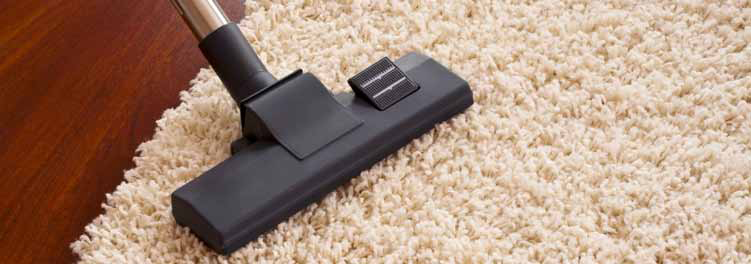
If you spill on a rug, clean it immediately. Once the stain is set in it becomes more difficult to clean.
Never rub a spill as it forces the spill deeper into the rug. Blot with a clean white cloth.
On wool rugs, use lukewarm water or a Stain Remover or a wool cleaning liquid to remove any residual stain.
On synthetic rugs, use a Stain Remover, Fantastic or 409 can be used to remove grease and stubborn stains.
On natural fiber grass rugs, use lukewarm water to remove any residual stain.
Always use clean water to remove any residual cleaner, and dry towels to absorb any remaining moisture.
Always use a professional area rugs cleaning expert. Cleaning a handmade rug is a different than cleaning wall to wall carpet.
Inspect the rug with the cleaner before it is cleaned. Get a signed receipt and guarantee of work before the work is done.
We recommend a rug pad underneath every area rug.
Rug pad extends the life of your rug as it absorbs wear and tear from the friction between floor and rug.
They help avoid accidents from slipping on moving rugs and tripping on turned up edges.
They provide extra cushion on hard surfaces for your feet
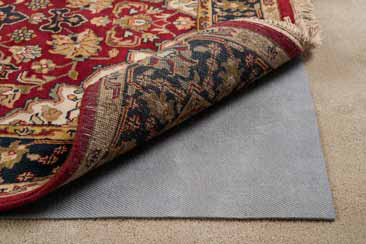
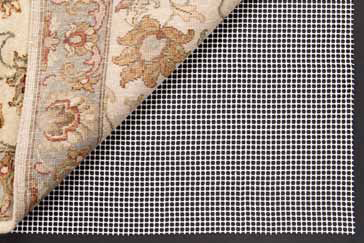
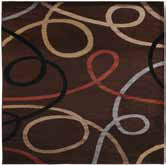 |
Synthetic Fibers - Olefin / Polypropylene / Nylon:
|
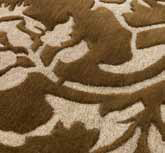 |
Wool Rugs:
|
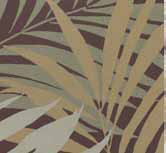 |
Indoor/Outdoor Rugs:
|
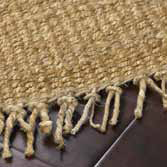 |
Natural Fiber Rugs - Jute/Hemp/Coir/Sisal:
|
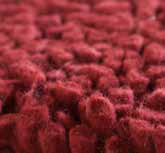 |
Shag Rugs:
|
